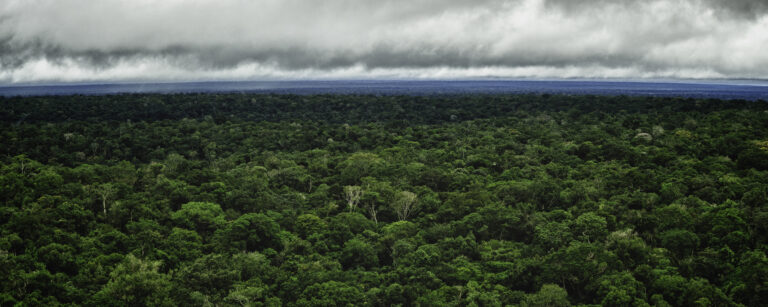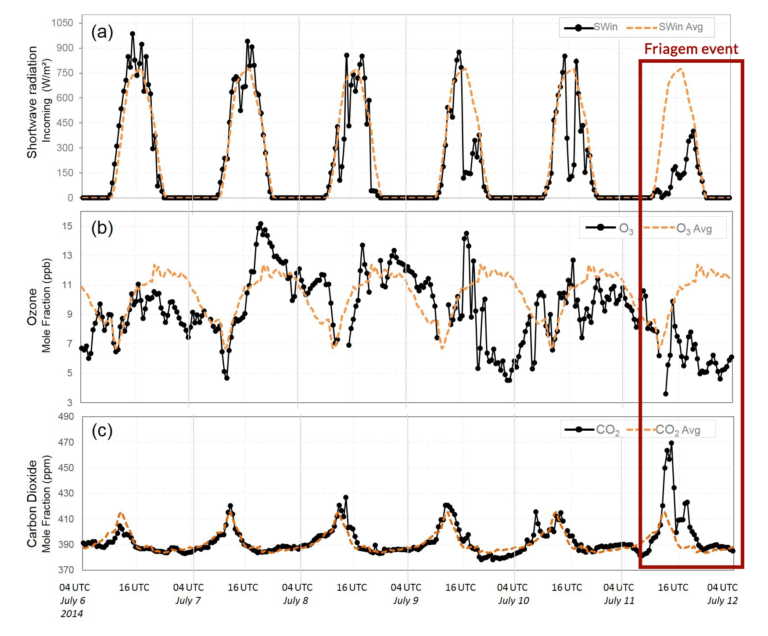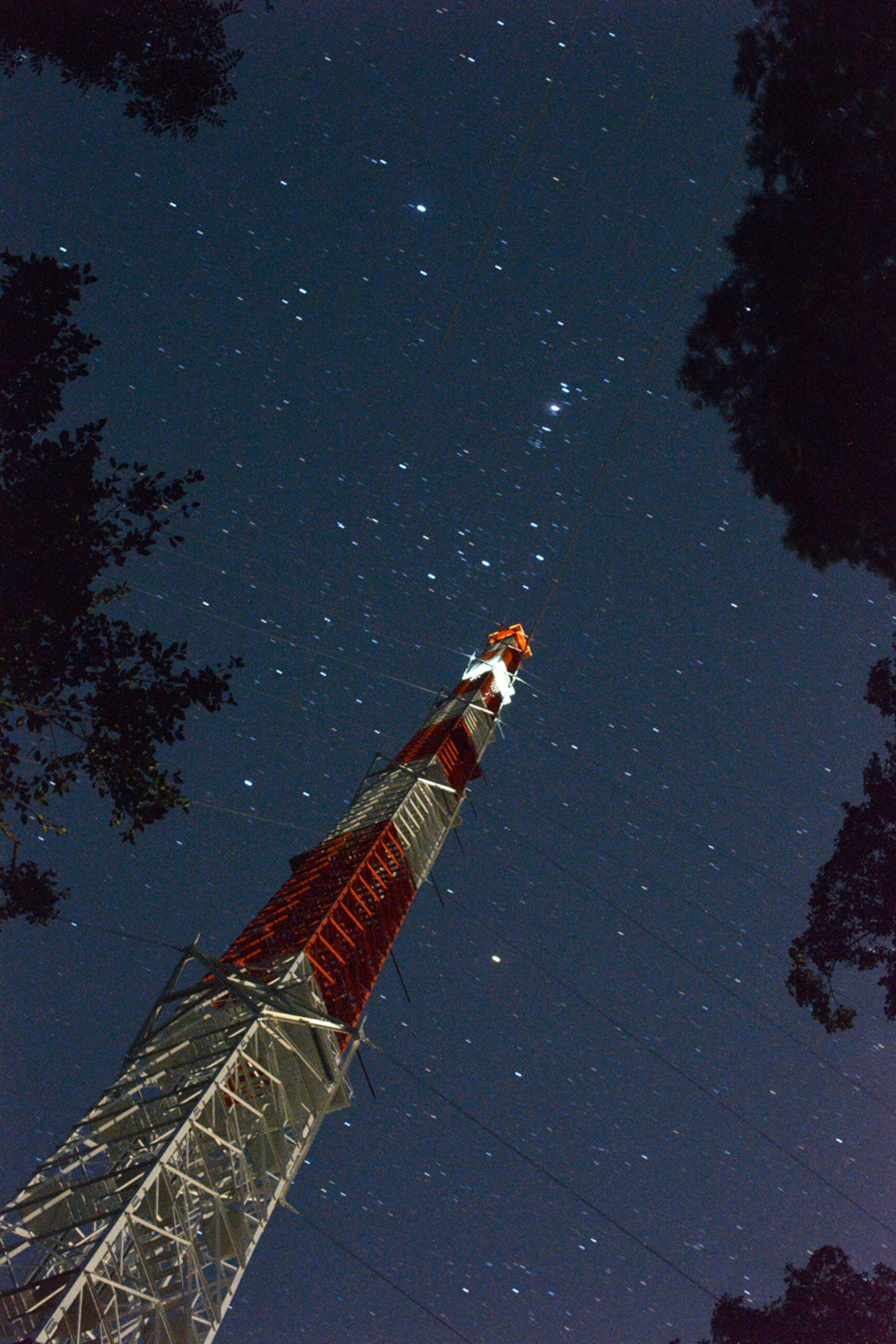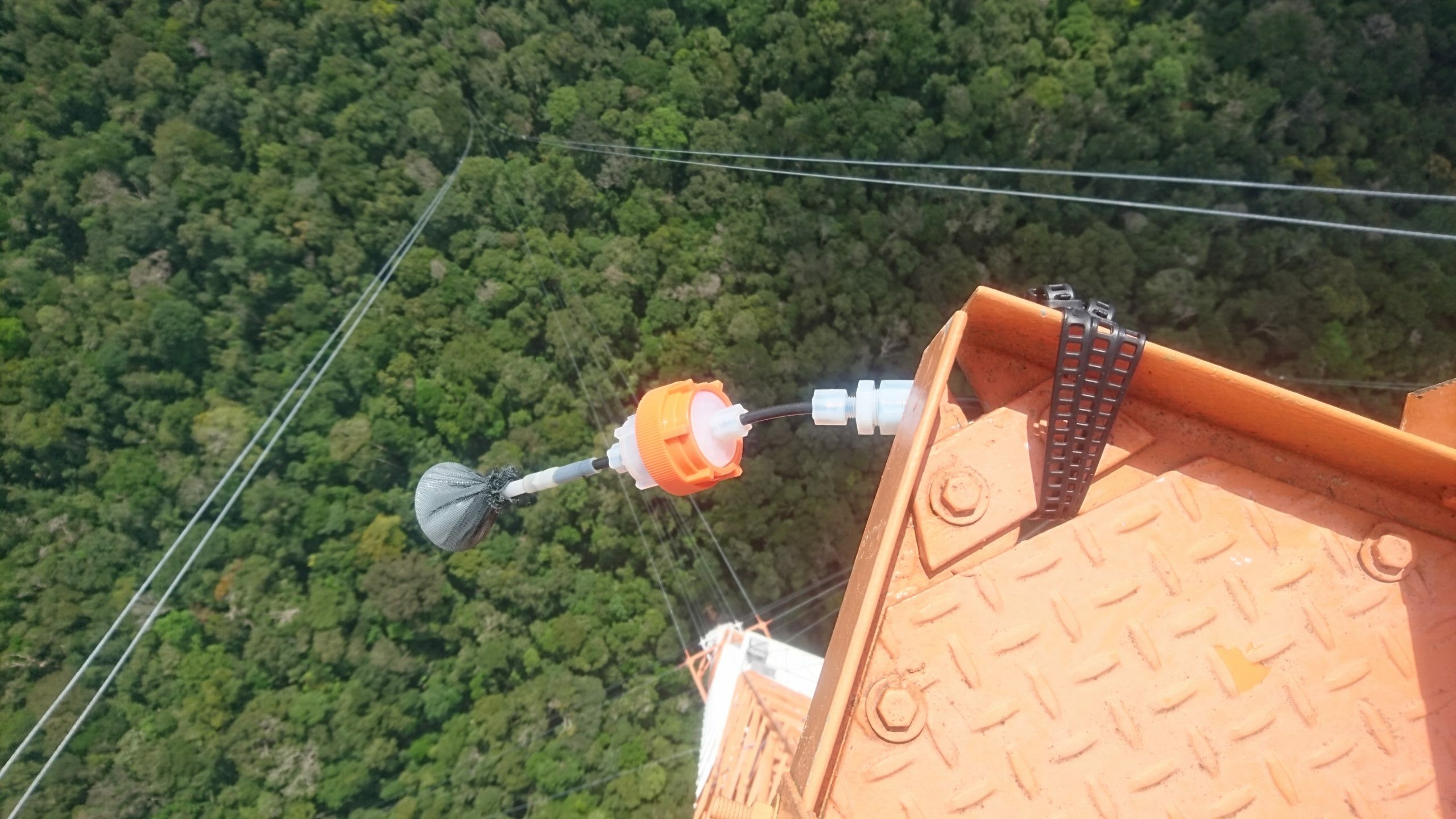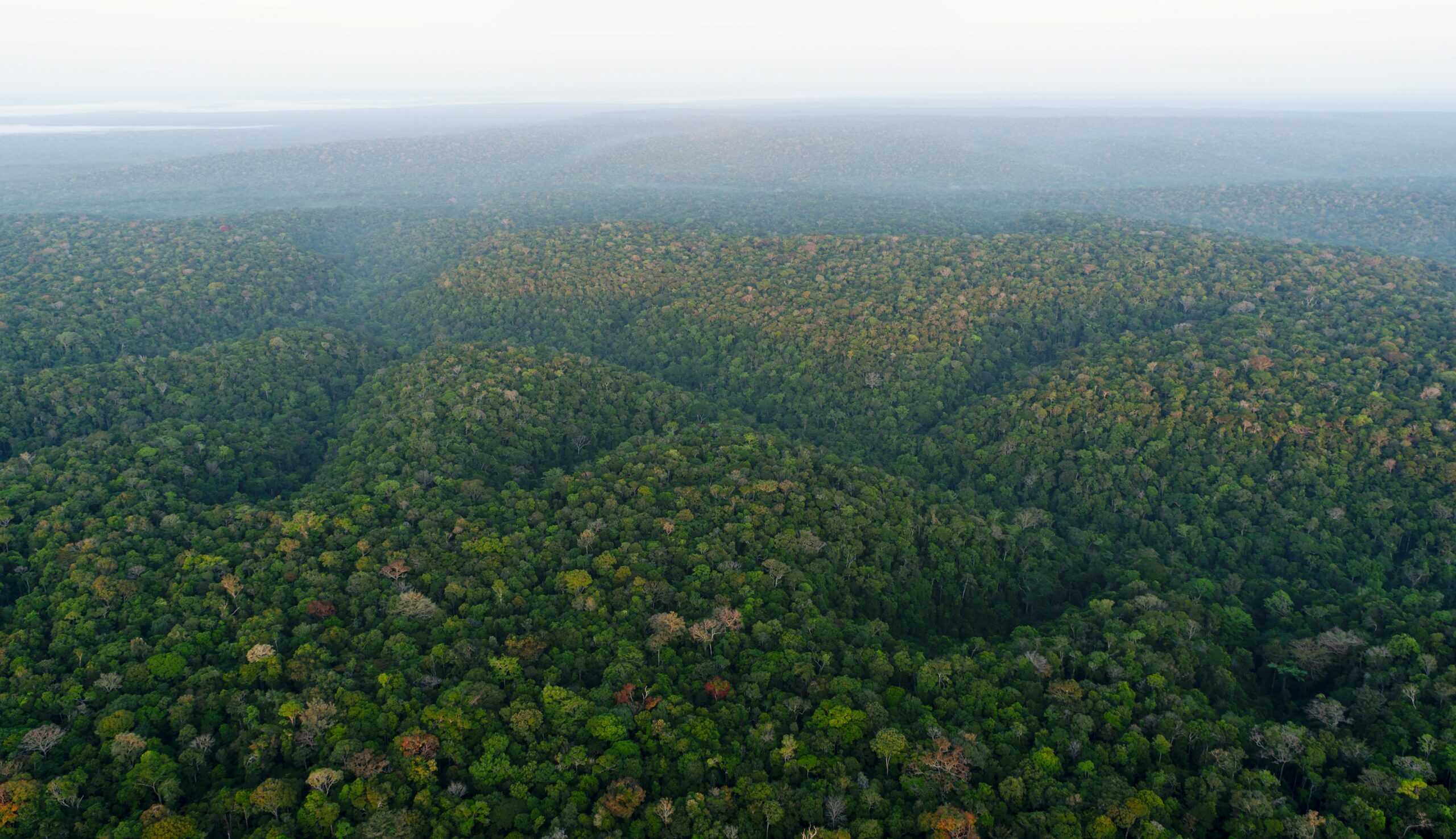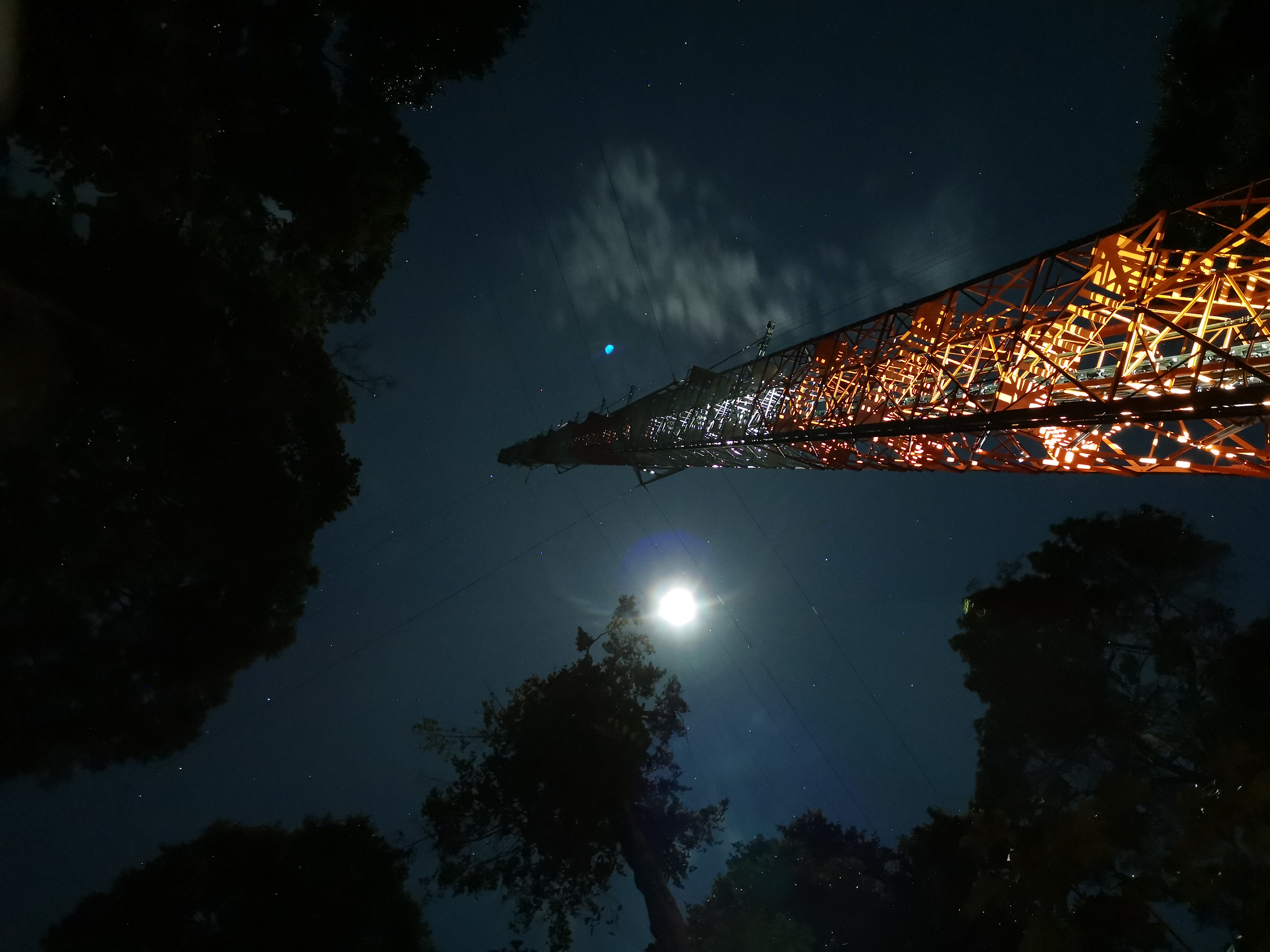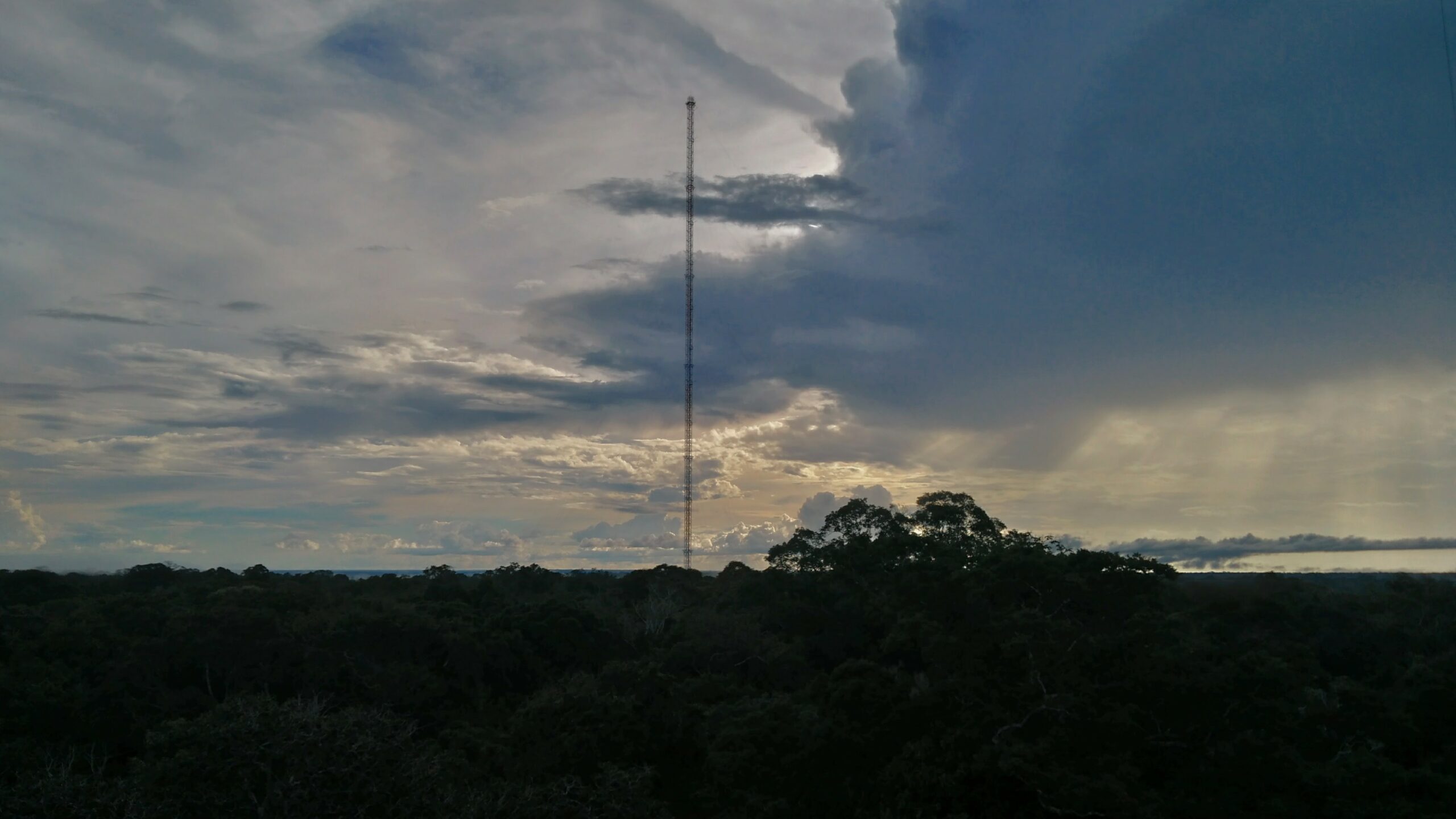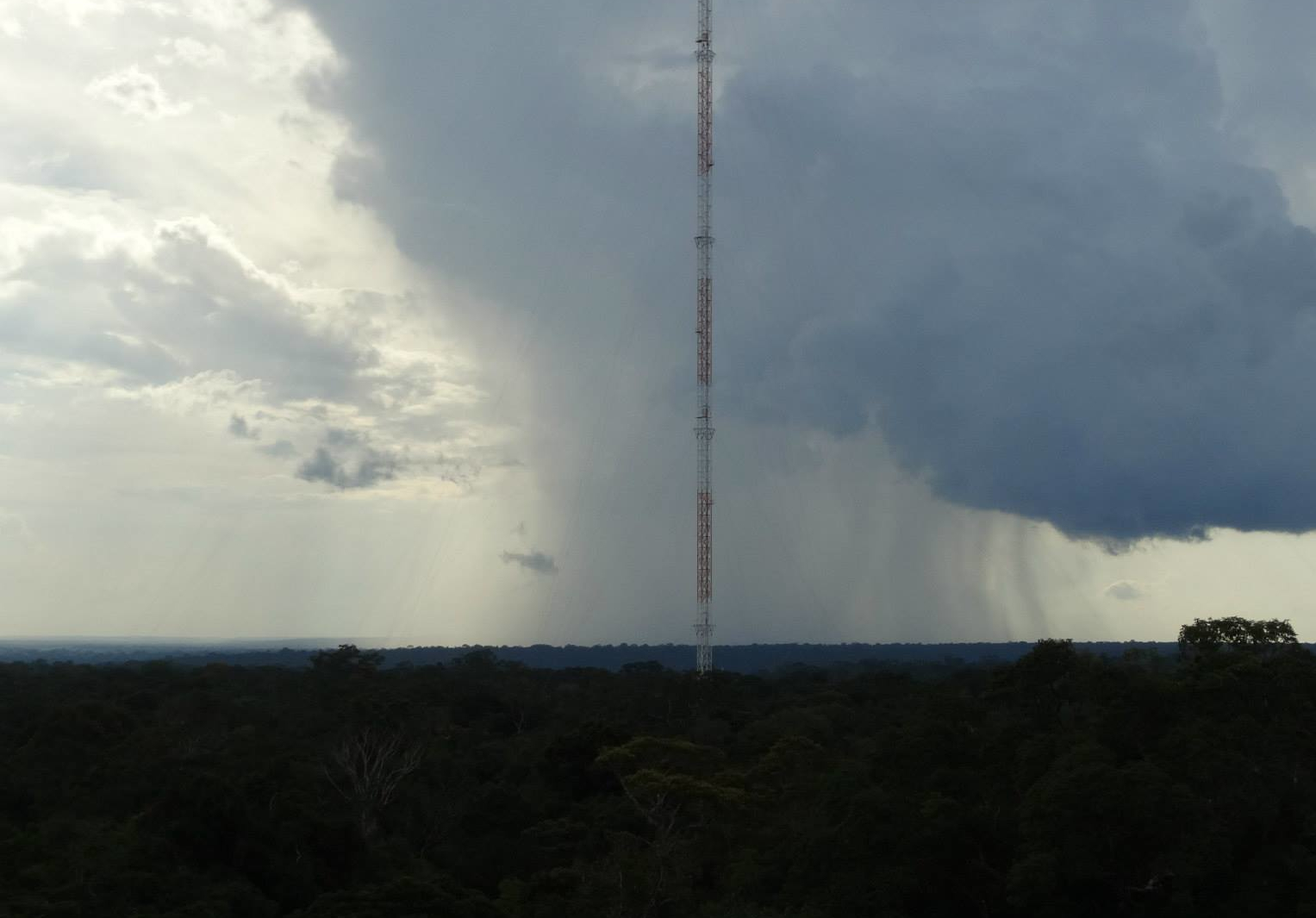Although located in the tropics, the Amazon sporadically experiences incursions of cold waves from the high latitudes of the Southern Hemisphere. These incursions are called friagem events. They significantly impact the weather patterns during the time they occur, causing for example a temperature drop and increased cloudiness. Therefore, it seems likely that these events might also impact the chemistry of the atmosphere and its trace gas concentrations.
Friagem events and the weather
To find out if that is indeed the case, Guilherme Camarinha-Neto and his colleagues studied a friagem event at ATTO. They also collected data at the airports of Porto Velho in the Southwest of the Amazon basin and of Manaus for comparison. The event took place in July 2014. Friagem events are generally more common in the dry season, from July to September, and 2-3 events for the year are not unusual.
First of all, they found the same weather pattern for this friagem: the temperature dropped significantly compared to the average July values in all locations. However, the cooling was somewhat more pronounced in Porto Velho. When the event arrived in Manaus and at ATTO a few days later the temperature dropped by 4°C, instead of the 7°C recorded at the edge of the Amazon basin. They also noticed that the predominant wind direction changes from the common East to South-East to West to South-West. Finally, the team also observed that the interaction between the friagem air mass and the trade winds caused strong convection. This resulted in cloud formation and record rain for the usually rather dry month of July.
Friagem events and atmospheric chemistry
In addition to the meteorological parameters, the team also analyzed the chemistry of the atmosphere across the event. Specifically, they looked at ozone and CO2. Before the friagem arrived at ATTO, they measured values close to the monthly averages. However, during the cold spell, the ozone values dropped, and the CO2 values increased.
The reason is probably the cloudiness associated with the event. The forest plants, which require sunlight for photosynthesis, were less effective on this cloudy and rainy day. Consequently, they could take up less CO2, so it accumulated in the atmosphere. Clouds and variations in radiation are also known to affect the daily cycle of ozone.
This was likely amplified by strong vertical stratification of the air column. By combining observations with computer simulations, the scientist concluded the friagem only affected the lower 500 meters of the atmosphere. You can think of it as a thin tongue of cold air above the forest, which prevents vertical mixing with the air above.
Camarinha-Neto et al. published the study “The friagem event in the central Amazon and its influence on micrometeorological variables and atmospheric chemistry” Open Access in Atmos. Chem. Phys. Doi: https://doi.org/10.5194/acp-21-339-2021
Similar articles
Polari Corrêa and his co-authors analyzed the atmospheric dynamics in and above the forest canopy during one particular night at ATTO. Those conditions changed throughout the night. Turbulence was followed by the formation of a gravity wave and a low-level jet. It was likely formed due to the breeze from the Uatumã River and the hilly terrain. The study highlights the complex dynamics and mechanisms in the atmosphere above a dense forest.
Biogenic volatile organic compounds remove OH from the atmosphere through chemical reactions, which affects processes such as cloud formation. In a new study, Pfannerstill et al. reveal the important contributions of previously not-considered BVOCs species and underestimated OVOCs to the total OH reactivity.
Luciane Reis and her colleagues now performed a new study at the ATTO site that shows that gust fronts can also cause large jumps in carbon dioxide concentrations. But what are the sources of this carbon-dioxide-rich air?
Scientists measured carbonyl compounds in the atmosphere of the Amazon rainforest with the adopted instrumentation to separate aldehydes and ketones. They made some unexpected discoveries, showing studying the variety of carbonyl compounds separately is extremely worthwhile.
Atmospheric aerosol particles are essential for the formation of clouds and precipitation, thereby influencing the Earth’s energy budget, water cycle, and climate. However, the origin of aerosol particles in pristine air over the Amazon rainforest during the wet season is poorly understood. A new study reveals that rainfall regularly induces bursts of newly formed nanoparticles in the air above the forest canopy.
In a new study, Luca Mortarini and his colleagues introduce a novel approach to the study of the roughness sublayer, using a cospectral budget model. Its originality lies in not considering the mixing layer analogy to parameterize the turbulence statistics. In addition, it relates them to the different scales of the wind velocity spectrum without making any assumption on the property of the flow.
Eiky Moraes, Cléo Dias-Júnior and their colleagues wanted to find out if the local topography at the ATTO influenced the atmospheric movements. In particular, they were interested in the effect that topography has on the formation of gravity waves. Comparing two simulations, one with and one without topography, revealed some important differences in the dynamics and chemistry of the atmosphere.
Only when the air inside of the forest canopy mixes with the air above can there be exchange. The physical movement of the air, its turbulence, determine how well these two layers of air, the one inside the forest canopy and the one above, mix. Daniela Cava, Luca Mortarini, Cleo Quaresma and their colleagues set out to address some of these questions with two new studies that they conducted at ATTO. They wanted to define the different regimes of atmospheric turbulence or stability (Part 1) and describe the spatial and temporal scales of turbulent structures (Part 2).
In a new study, Marco A. Franco and his colleagues analyzed when and under what conditions aerosols grow to a size relevant for cloud formation. Such growth events are relatively rare in the Amazon rainforest and follow and pronounced diurnal and seasonal cycles. The majority take place during the daytime, and during the wet season. But the team also discovered a few remarkable exceptions.
It is long known that aerosols, directly and indirectly, affect clouds and precipitation. But very few studies have focused on the opposite: the question of how clouds modify aerosol properties. Therefore, Luiz Machado and his colleagues looked into this process at ATTO. Specifically, they studied how weather events influenced the size distribution of aerosol particles.
Polari Corrêa and his co-authors analyzed the atmospheric dynamics in and above the forest canopy during one particular night at ATTO. Those conditions changed throughout the night. Turbulence was followed by the formation of a gravity wave and a low-level jet. It was likely formed due to the breeze from the Uatumã River and the hilly terrain. The study highlights the complex dynamics and mechanisms in the atmosphere above a dense forest.
Biogenic volatile organic compounds remove OH from the atmosphere through chemical reactions, which affects processes such as cloud formation. In a new study, Pfannerstill et al. reveal the important contributions of previously not-considered BVOCs species and underestimated OVOCs to the total OH reactivity.
Luciane Reis and her colleagues now performed a new study at the ATTO site that shows that gust fronts can also cause large jumps in carbon dioxide concentrations. But what are the sources of this carbon-dioxide-rich air?
Scientists measured carbonyl compounds in the atmosphere of the Amazon rainforest with the adopted instrumentation to separate aldehydes and ketones. They made some unexpected discoveries, showing studying the variety of carbonyl compounds separately is extremely worthwhile.
Atmospheric aerosol particles are essential for the formation of clouds and precipitation, thereby influencing the Earth’s energy budget, water cycle, and climate. However, the origin of aerosol particles in pristine air over the Amazon rainforest during the wet season is poorly understood. A new study reveals that rainfall regularly induces bursts of newly formed nanoparticles in the air above the forest canopy.
In a new study, Luca Mortarini and his colleagues introduce a novel approach to the study of the roughness sublayer, using a cospectral budget model. Its originality lies in not considering the mixing layer analogy to parameterize the turbulence statistics. In addition, it relates them to the different scales of the wind velocity spectrum without making any assumption on the property of the flow.
Eiky Moraes, Cléo Dias-Júnior and their colleagues wanted to find out if the local topography at the ATTO influenced the atmospheric movements. In particular, they were interested in the effect that topography has on the formation of gravity waves. Comparing two simulations, one with and one without topography, revealed some important differences in the dynamics and chemistry of the atmosphere.
Only when the air inside of the forest canopy mixes with the air above can there be exchange. The physical movement of the air, its turbulence, determine how well these two layers of air, the one inside the forest canopy and the one above, mix. Daniela Cava, Luca Mortarini, Cleo Quaresma and their colleagues set out to address some of these questions with two new studies that they conducted at ATTO. They wanted to define the different regimes of atmospheric turbulence or stability (Part 1) and describe the spatial and temporal scales of turbulent structures (Part 2).
In a new study, Marco A. Franco and his colleagues analyzed when and under what conditions aerosols grow to a size relevant for cloud formation. Such growth events are relatively rare in the Amazon rainforest and follow and pronounced diurnal and seasonal cycles. The majority take place during the daytime, and during the wet season. But the team also discovered a few remarkable exceptions.
It is long known that aerosols, directly and indirectly, affect clouds and precipitation. But very few studies have focused on the opposite: the question of how clouds modify aerosol properties. Therefore, Luiz Machado and his colleagues looked into this process at ATTO. Specifically, they studied how weather events influenced the size distribution of aerosol particles.
Polari Corrêa and his co-authors analyzed the atmospheric dynamics in and above the forest canopy during one particular night at ATTO. Those conditions changed throughout the night. Turbulence was followed by the formation of a gravity wave and a low-level jet. It was likely formed due to the breeze from the Uatumã River and the hilly terrain. The study highlights the complex dynamics and mechanisms in the atmosphere above a dense forest.
Biogenic volatile organic compounds remove OH from the atmosphere through chemical reactions, which affects processes such as cloud formation. In a new study, Pfannerstill et al. reveal the important contributions of previously not-considered BVOCs species and underestimated OVOCs to the total OH reactivity.


